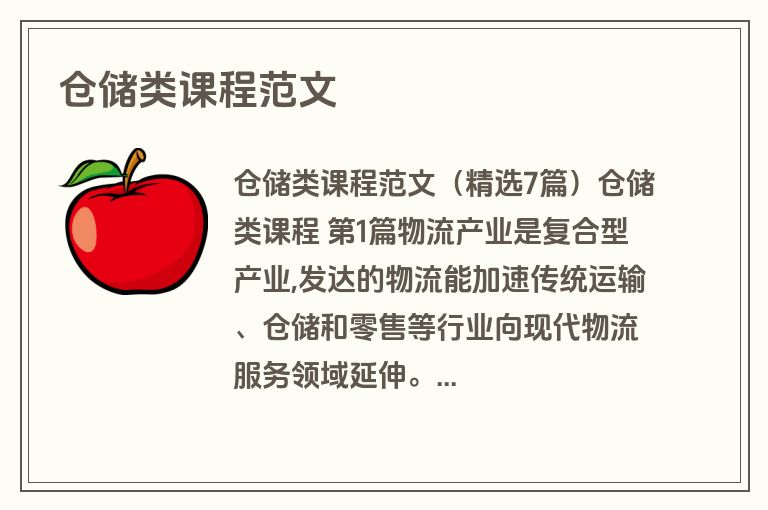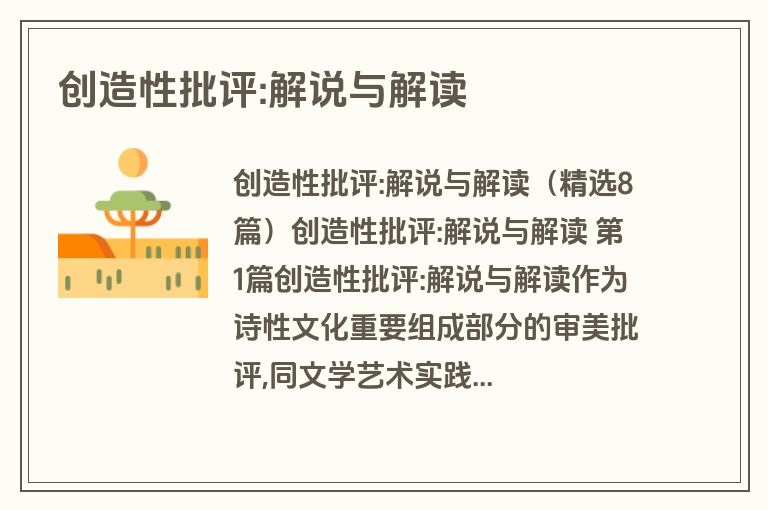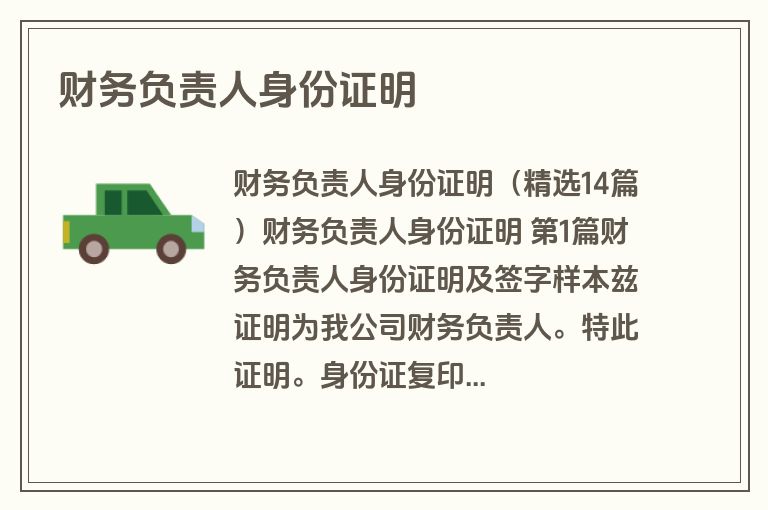新目标七年级英语unit7课件(精选8篇)
新目标七年级英语unit7课件 第1篇
【教材分析】
本模块以出行旅游为话题。对话是通过读地图来呈现指路及表明具体位置的语言表达方式。通过本单元的听说活动,给学生提供充足的体验和运用语言的机会。
【学情分析】
学生具有一定的英语基础,学习热情高,表现欲强,能积极参与到课堂中。而且相互之间能够很好地利用小组进行合作交流。
【教学目标】
Knowledge objective:
To master some words and expressions about places, positions and giving directions.Ability objective:
1.To ask the way and give directions.2.To understand a conversation of giving directions.Moral objective:
1.To be polite to others.2.To be ready to help others.3.To know more about Beijing and love Beijing.【教学重点】
1.To learn some words and expressions about places:
Bank, museum, along, across, cross, opposite, tourist, excuse, excuse me, street ,turn, third, guidebook, bookshop, right, why not ?? could, underground
2.To learn and review some words about positions: near,opposite, along, on the left/right, across.3.To learn some expressions about asking ways and giving directions:
【教学难点】
1.To get information from the conversation.2.To ask the way and give directions.【教学方法】
PWP method, task-based method and interactive approach.【教学手段】
A tape recorder, multimedia ,PPT courseware, the teaching CD and some pictures.【教学过程】 Teaching Procedures:
Step 1 Revision【复习】
1、listen to an English song.Aim : to activate the classroom atmosphere.2、Do a duty :
Aim :To give one student a chance to train his spoken Englishin every class.3、Talking and acting:
Aim :to check if the students can practice the topic of the last
module and to develop the students’speaking and language expressing abilities.Step 2 Leading in
【导入】
1、Play a guessing game: The teachers shows the pictures ofnew words and let the students say as quickly as possible.Ai : to check if the students preview the new lesson before the class and to be familiar with them.2、Look, think and say: the teacher shows some pictures aboutgiving directions and some road signs and asks the students to think and say the phrases.Aim :to consolidate the phrases about giving directions.3、Find and say.The teacher shows pictures of direction prepositions, and the students find the right words and make some sentences with the direction prepositons.Aim : to understand and master the usage of the directionprepositions.【总结】
1.Do some exercises about the direction prepositions。2.Do some exercises about the patterns of asking for and giving directions.
新目标七年级英语unit7课件 第2篇
七年级下第七单元《What does he look like?》是一堂人物外貌的描述课,所以我用一幅电影海报让学生说说自己熟悉的明星,目的在于活跃气氛,所以与此课人物外貌相关连,这样引入就能自然过渡到本节课的内容。在教学上以激发学生的学习兴趣为主,通过活动让学生感知、操练语言,为下一步活动做好铺垫。
其次,我们的学生由于他们的年龄特征所定,对形象的事物特别感兴趣,尤其对新人类更是喜欢。那么就这个特点,我采用了大量的人物图片。而这些图片是经过精挑细选的,就本课的教学内容它主要是要求描述人物的发型与身材,所以选图时,就得相当有代表性。比如:高个——姚明;矮个——潘长江;让学生一看就能明白这些单词的含义。那么他们说起来也就琅琅上口了。
根据学生们的年龄特点,在课程中我设计了记忆抢答,小组调查,猜猜他是谁,和给老师设计一个新形象这样几个任务。从个人活动,同桌活动,到小组活动,充分地将课堂新授内容通过不同的方式体现出来,这些活动贴近学生的生活,让学生的口、手齐动。也发挥多学科知识的联系作用。本课要求学生能描述他人的外貌。这就要求学生应具备听、说能力。怎样把这样的能力融入一体,并且学生能很好的接受,同时还能锻炼写的能力呢?通过猜同学,让学生们关注身边同学的特点,用刚学会的语言来描述自己同伴的长相,更贴近生活实际,给学生的学习带来更多的乐趣。这样也更能给学生们长久的记忆。学生们的想象能力十分丰富,何不让他们想象一下自己老师们的新形象是什么样子呢?让他们一边描述,一边画出自己老师的肖像。这样利用美术知识来巩固本节内容,学习的形式也多样了,岂不更好?设计这个任务目的在于让学生能学有所用,描述自己的老师,给老师设计一个新形象,并画出来,学生们十分激动,想着能用英语描述自己的老师并且给他们设计形象了,他们特别高兴。此时的气氛很活跃,也让此堂课别开生面,乐趣横生,相信也让在场的老师们感受到了学生们对于自己任课老师们的关注,喜爱与认可。同时这也培养学生的多种能力,让其能动手动口。通过这一活动,使学生在掌握一定的英语基础知识和基本技能,能与小组成员合作共同完成学习任务,发展语言的综合运用能力,并创造性地使用英语表达自己的思想。同时缩短了老师与学生的距离,老师们也能从学生们的言语及图画中感受到学生深深的爱!我想这也是一种和谐的体现吧
在课堂上我鼓励学生大胆的使用英语,对他们学习过程中的失误和错误采取宽容的态度。以学生为主体,教师旨在导学,不断创设情境让学生参与,积极肯定地评价学生的表现。任务设计较成功,创造条件让学生能够研究他们自己感兴趣的话题。同时注意给学生创设自主学习和交流的机会。学生通过体验、实践、讨论、合作等方式发展了听说读写的综合语言技能。增加学生的语言实践,促进他们在整个教学活动中主动参与。同时我也将在今后的教学中继续探索在任务、与合作型教学中如何调动全体学生的积极性的方法。争取做到让学生独立自主学习,参加小组活动进行合作学习,做到探究学习。
课的设计不管是从内容上还是活动上都是很有激情的,学生的激情也充分的调动了起来。课后我一直在思考为什么学生们上课时说得好可以到考试成绩就有问题了呢?我发现自己还有很多不足。
新目标七年级英语unit7课件 第3篇
一、学会“偷懒”,培养学生主动学习意识
“春蚕到死丝方尽,蜡炬成灰泪始干”。这是对传统教师的生动写照。现实中终有那么一天,教师声音哑了,身体累垮了,这时没有了教师的拼命讲,学生也不知道怎么学了。为了充分体现“学为主体、教为主导”的教育原则,为了避免教师“未老先衰”,促进学生今后健康成长,我们一定要做会“偷懒”的老师。
1.“偷懒”批改作业。
学校用的“活页作业”比较实用,听写完单词、句子,我经常让学生自己初批,我再复批。又如英语助学,我多是先要求学生自己独立完成,然后才发下正确答案,让他们自己用红笔纠错,不理解的可适当做记号等待我讲评。当然,为了防止个别学生不按要求完成作业,我还将他们的作用收上来,再改改(其实是检查)。这样通过做作业、批改作业,不仅让学生及时发现并改正了错误,而且省去了我很多批改作业的时间,大大提高了教与学的效率。
2.“偷懒”讲评试卷。
在讲评课上,我采取分组记分的激励方式让学生先讲:能提出问题的小组加5分,会解答问题的小组加10分。这样全班同学都争先恐后提出问题、解决问题,没有一个学生因自己不懂而害羞,更不会不懂装懂。看着一张张因智力得到激发而充满自信的小脸,我更坚信了这一教学方法的正确性。当然,有放有收,当学生确实遇到了不能解决的难题,我便适时给他们精讲点拨,将教师的评放在最关键的时刻。这样,学生不仅得到了“鱼”,而且学到了“渔”,学习的主动性得到了充分发挥,学习英语的兴趣因而大大提高。
3.“偷懒”上写作课。
英语写作是学生英语学习中感到最“头痛”的事,我的做法是让学生上半节课写、下半节课评。同样是让学生做主角,同样采取积分激励法:敢于在全班同学面前主动举手朗读自己的作文可以加20分,有说出短文优、缺点的,说出一点加5分。课堂上,我的文章你评,你的文章我评,这样在批评与自我批评中学生懂得了如何改写作文,然后将作文再拿回家修改,第二天短文交上来时批改起来就不那么吃力了。我“偷懒”了,但学生却形成了积极的情感态度、科学的逻辑思维,培养了大胆实践的应用能力,开发了学生自主学习的潜能。
二、创设情境,激发和保持学生的学习兴趣
“兴趣是最好的老师”,只有对学习产生了兴趣,才会享受学习的欢乐,从而更加热爱学习。许多学生刚刚接触英语这门功课时,感觉比较新奇,但大多数是一种较短暂的直接兴趣,随着时间的推移,课程内容增多,难度加大,就会有一些学生把这门课当成负担,进而失去学习的兴趣和动力,七年级英语教学中最重要的是学生学习兴趣的培养。
基于此,在英语教学开始阶段,我着重从培养学生学习兴趣入手,努力让学生听、说、读、写并举,眼、耳、口、鼻、脑并用,因势利导,采取多种方法激发学生学习英语的兴趣,把他们领进英语这扇大门。在课堂教学中,我注意采取以下方法培养学生的兴趣:一是“以美引趣”,即尽量注意用美的语言、表情、动作、板书等激发学生的兴趣。二是“以奇诱趣”,即注意用新奇的内容和方法,诱发学生的兴趣。三是“设疑激趣”,以注意抓住知识的关键处设疑引思,使学生产生强烈的求知欲望。四是“以动唤趣”,即注意在课堂上通过动脑、动手、动口等多种活动形式,唤起学生兴趣。
英语学习兴趣是影响学生英语学习的最重要的非智力因素,它在很大程度上影响英语教学质量,情景教学法是培养学生学习兴趣的有效途径。创设情境,一为鼓励所有学生大胆地在各种场合使用英语,并且对他们在学习过程中的失误和错误持宽容的态度。在教学过程中,对于每个需要掌握的知识点,我都从后进生入手,使他们掌握最基本的知识的同时,注意拓宽知识面,同时关注优生的情况,给他们自主学习和直接交流的机会。二为把英语教学与情态有机地结合起来,设计各种合作学习活动,促进学生互相学习、互相帮助,体验成就感,发展合作精神。
学生的学习类型是有差异的,学习能力差异很大,学习兴趣差异更大,学生的喜好更是不同,有的喜欢听说法,就是一直看着老师,听老师说,很少看书本;有的喜欢阅读法,就是一直盯着书本看,很少看老师或黑板。因此,英语教师必须运用多元化的教学方法,激发每个学生的学习兴趣,让他们喜欢英语。单靠唱歌游戏等不能培养学生持久的兴趣。新鲜劲儿一过,学生就会厌倦。唱歌、游戏等应作为学生学习英语语言知识、技能的一种手段,而不是培养兴趣的手段。教师必须采取多种手段帮助学生在记忆力强的时期多记单词,多学习语言规则,并尽可能地多创造模仿的机会,改善学生的语音和语调,因为在英语学习中,听、说、读、写、译五种能力是可以互补的。
当然,除了学习目的、学习方法和学习兴趣等方面的问题需要关注以外,我认为学生还必须掌握足够多的词汇,也就是“量的积累”。“不学习语言规则、不掌握相应数量的词汇,英语应用能力就是空中楼阁”。因此,初一英语一定要多进行相应的语音规则训练,熟悉词汇的拼写规则,这样单词的音、形、意三者才能有效地结合在一起,轻松记忆单词。
总之,七年级英语教师要当“有心人”,时刻注意教学策略的实践与研究。目标明确,方法得当是成功进行英语教学的重要因素,但如果能同时注意教学时的点滴细节,积少成多就必能取得令人惊喜的收获。
摘要:英语是学生了解世界的窗口, 也是走向世界的必经之路。世界在变化, 一切都在进步, 英语教学, 特别是七年级英语教学, 承小学英语教学之先启初中英语教学之后, 显得特别重要。
新目标七年级英语unit7课件 第4篇
T-shirt? 这件T恤衫多少钱?
—Its seven dollars. 七美元。
【中考链接】 —______?
—Only $5. It is very cheap. (2007浙江温州)
A. What time is it
B. How many do you want
C. How much is itD. Whats wrong
【答案与解析】 选C。询问物品的“价格”时,一般可用How much is / are ...?,也可用Whats the price ...?。
2. 【课本原句】 —Can I help you?我能帮你吗?
—Yes, please. 是的。
【中考链接】—Can I help you, Sir?
—______. I need some books about western culture. (2007云南省)
A. Yes, pleaseB. No, thanks
C. Yes, you canD. No, you cant
【答案与解析】 选A。当商店里的服务员询问顾客要买什么东西时,一般用 Can I help you?;顾客如果想买东西,可以说Yes, please.,然后再说具体要买什么。
3. 【课本原句】 Here you are. 给你。
【中考链接】 —Could you lend me the book you bought last week?
—______. (2008四川成都)
A. Yes, here you are
B. No, I cant lend it to you
C. Its not interesting
【答案与解析】 选A。当你买、借东西时,对方给你时一般用Here you are.来表示。
4. 【课本原句】 —Thank you. 谢谢你。
—Youre welcome. 不客气。
【中考链接】 —Thank you for your help.
—______. (2008辽宁大连)
A. Thats great B. Youre welcome
C. Im sure of thatD. Im afraid not
【答案与解析】 选B。当对方向你表示感谢时,可用Youre welcome. 来回答,意为“不客气 / 不用谢”,也可用Thats OK. / Not at all.等。
5. 【课本原句】 Anybody can afford our prices! 任何人都能负担得起我们的价格。
【中考链接】 1) 根据题中空格后的英文释义或句意,写出句中所缺单词,使句子通顺。
The girl likes the handbag very much, but she cant ______ (have enough money to buy or to do something) it. (2008江苏南通市)
2) Miss Li is ______ music teacher. We all like her very much.(2008山西省)
A. weB. us C. our
【答案与解析】 1) 填afford。根据括号内的释义“有足够的钱来买某物或做某事”来判断,应该用afford,意为“负担得起;买得起”。2)选C。此处应该用形容词性物主代词our,意为“我们的”,在句中充当定语。
6. 【课本原句】 The green shorts are on sale for $25! 绿色的短裤特价卖25美元。
【中考链接】 词语释义:
—Why are you in such a hurry, Meimei? —The fashion clothes are sold in the supermarket at the moment. (2007湖北黄冈)
A. boughtB. have sale
C. on sale D. selling
七年级英语unit7课件 第5篇
一、学情分析
1、初一年级学生好奇心强,求知欲望大,对身边生活的新鲜事物特别感兴趣。
从认识角度来看,他们的具体形象思维占据重要位置,具有较强的模仿能力,比起初二三学生来说,敢于表现自己,这种种特点都有利于本节英语教学的开展。
2、学生已经学习了颜色、数字1-9及名词单、复数的有关知识。
这对本节课的学习打下一定的基础。
表示服装的单词尽管对学生来说是陌生的,但由于它们特别贴近生活,学生也会有兴趣去记。
本单元关于询问价格和购物的话题来自日常生活,因此也不难理解,特别是通过猜物品价格、讨论如何购物、角色扮演等活动可以大大激发学生学习英语的兴趣。
二、教材分析
《How much are there pants?》选自义务教育课程标准实验教科书七年级第七单元。
新课程非常重视任务型的课堂教学特点,重视学生的知识与技能,强调学生在活动中完成任务,以达到利用英语进行听、说、读、写的能力。
本单元的中心话题的购物,主要语言功能项目的谈论服装、询问价格和表示感谢,语法结构是how much引导的问句及其回答,名词单、复数的使用和指示代词this,that, these,those的用法。
语言技能和语言知识几乎都是围绕着中心话题来展开的。
它贴近学生日常生活,是学生乐谈的话题。
学生通过学习有关服装的一系列词汇,并使用这些词汇询问价格,可以了解美圆与人民币的知识,培养跨文化交际的意识。
同时,通过购物这一教学过程,学生可以学会如何理财,养成不乱花钱的习惯。
三、本课教学目标
本单元通过学习使用How much引导的问句以及回答,让学生学会谈论物品的颜色和价格、对服装的喜好和购物时使用的礼貌用语等
1语言技能目标
⑴能准确表达服装的颜色、大小及长短等
⑵能对物品的价格进行问答等
⑶能使用礼貌用语进行购物等语言知识目标
⑴掌握有关服装、颜色和数字的词汇,⑵能正确使用目标语言对物品的价格进行问答等。情感态度目标
通过本单元的学习,能使学生了解中西方不同的购物表达方式,以及通过购物,学会使用礼貌用语,养成勤俭节约、合理支配金钱的好习惯。
四、教学的重点难点
<1>教学重点:
1.掌握一些服装类、颜色形状大小的词汇以及有关数字的表达。
2.熟练运用数字.正确表示价格
3.在购物的情景中,熟练并正确使用句型:How much is…? It’s… How much are …? They are….<2>教学难点:
1.指示代词this, that, these, those的适当使用。
2.How much引导的问句以及回答,以及句中主谓数的一致
五、教学过程
Step 1: Greetings.Step 2: Lead in.T: Do you like shopping ?
S: Yes, I/ we do.T: What do you want to buy ?
Show some pictures of different clothes to Ss.T: What’s this ? Do you know?
It’s a T-shirt/sweater/bag/skirt/hat.(Write the names of the clothes on the Bb.)
T: What are these?
They are socks/shorts/pants/shoes.(Write these new words on the Bb.)
Step 3: Read the words and then do the exercises.1.Match the words with the pictures in 1a.(Ask Ss to read the words and match the words with the pictures.Then check the answer.)
2.Listen and circle the things in the picture Ss hear in 1b.(Ss should circle the green shorts, the white sweater and the brown hat.)
Step 4resentation
Show a jacket
T: How much is the jacket?
Ss:(Help students to answer)It’s …dollar(s)/yuan.Show a hat
Ask students to practice like above.Show a pair of shoes
T: How much are these shoes?
Ss:(Help students to answer)They are…dollar(s)/yuan.Show a pair of socks
Ask students to practice like above.Step 5:Practice
Show some things and ask students to practice in groups like above.Step 6: Pairwork.Let Ss make their conversations to practice the pattern in pairs.Then ask several pairs of Ss to perform their conversations.Homework
新目标七年级英语unit7课件 第6篇
I. Teaching content: Section A 1a-1c
II. Teaching aims and demands:
1. knowledge objectives:
1) Key vocabulary:
much, How much…, sock, T-shirt, shorts, sweater, trousers, shoe, skirt, dollar.
2).Target language:
How much is the blue T-shirt? It’s seven dollars.
How much are these socks? They are two dollars.
Can I help you? Here you are. I’ll take it/them.
2. Ability objectives: Encourage students learn to ask and answer the price of the things.
3. Emotion objectives: To cultivate the cooperation through peer interaction. It’s not polite to ask the price of others’ things and incomes.
III. Teaching and learning methods: guiding for learning.
IV. Teaching aids: multi-media
V. Key Points:
How much questions
VI. Difficulties:
The names of different clothes. Demonstrates this, that, these, those.
VII. Teaching procedures:
Step 1: Lead in
Good morning, everyone. How are you today? (Fine) At the beginning of our class, I want you to look at some funny pictures. Ok, do you know what’s in their hands. ( money) Read after me.
Step 2: While teaching
A. Now, look, I have some money. Let’s see how much are they? How much is it? ( It’s 1 yuan.) How much is it? (It’s 5 yuan.) Look at this one, do you know which country the money belongs to? (America) How much is it? (It’s 1 dollar) How much is it? (It’s 5 dollars) Good! So look, what’s the difference between yuan and dollar? (yuan doesn’t have plural form but dollar has.)
B. Flashcards
(闪图模式:每一幅图快速闪图一次,然后定格图片和价格。)
T: What’s this in English?
S:Skirt/ 裙子。
T:Read after me. How much is it?
S: It’s 3 dollars.
...
C. some of the difficult words we have learnt just now. (sweater, T-shirt, shirt )
Practice: practice the target sentences with singular words.
a. use 2 pictures( T ask, Ss answer; Ss ask, T answer)
b. pairwork. (use the singular words to make sentences)
D. some new words (trousers, shoes, shorts and socks)
Practice: practice the target sentences with plural words.
a. use 2 pictures( T ask, Ss answer; Ss ask, T answer)
b. pairwork. (use the plural words to make sentences)
E. Guessing game. ( competition between boys and girls)
The first two pictures with 2 prices to choose. The next 2 pictures with half of the price covered. The next 3 pictures with a range of price in it.
F. Conversation
Role-play the conversation between shop assistant and customs.
A: Hello, can I help you?
B: Yes, I want ...
A: what color?
B: ...
A: How much is the
B: It’s/ They’re ...
VIII. Summary
Do you remember what we have learnt today? We have learnt some words about clothes. They are... We also learnt How much question. How much is... and How much are...
Ⅸ.: Homework:
Recite the new words on p37
X. Blackboard Design
Unit 7 How much are these socks?
A: Hello, can I help you?
B: Yes, I want ...
A: what color?
B: ...
A: How much is the
新目标七年级英语上册课件 第7篇
教学目标
一、知识与技能
1. 方位介词:in、on、under、behind、in front of、near等的.用法。
2. Where引导的特殊疑问句和一般疑问句Is the ... in/on/under the ...的回答。
3. 新单词:bed、table、bookcase、chair。
二、过程与方法
采用目标和任务教学法,调动学生的积极性,引导他们积极参与课堂。
教学难点
Where引导的特殊疑问句和一般疑问句Is the ... in/on/under the ...的交际。
教法导航
明确任务,以学生为主体。加强小组合作学习,积极回答问题。 教学准备
PPT、部分学习用品的实物。
教学过程
Step 1: Greetings
Greet the students as usual.
Step 2: Warming up
Play an English song before class to interest the students. Revise some school things by asking questions. e.g.:
What’s this?
Is this a ...
How do you spell it? etc.
Learn the new words in, on, under, behind ... by helping the teacher find the lost things. T: Where’s my English book?
S1: It’s here./I think it’s ... T: Oh, it’s on the desk.
T: Where’re my color pencils? S2: ...
Teach the new word “where” and the use of “they”.
Consolidate the prepositions by looking at the screen and answer the questions: Where’s ... ? Where’re ...
Step 3: Game
Students hide and look for the school things in pairs. One student hide one school thing and asks: Where’s? Where’re? The other student guess and answer: It’s in your desk. They are in your pencil case. etc. Ask some pairs to share their performances.
Step 4: New words learning
Show the students a picture of a room, tell them this is a bedroom and let the students list the things in it first. Then show them the whole picture, teach the new words, ask where the things are, and let the students answer, using the prepositions.
Repeat with a sitting room and a study, teach the new words and practice in the same way.
Step 5: 1a-1c
Work on 1a Match the words with the things in the picture. Students do it individually first, then check the answers.
Work on 1b play the tape for the students and ask them to number the things in the picture. Then ask one students to report the answers.
Work on 1c Make up dialogues in pairs, using the things in the picture. Let two pairs show their dialogues
Step 6: A memory test
Show a picture of a room, give the students one minute to look at it, then ask them what kind of things they saw and where the things are. Have a competition among groups. See which group can remember all the things and places.
Step 7: Homework
Copy the new words and try to remember them. Make a survey:
Interview one of your friends.Fill in the form below. Name Ms. Zhang/ Liu Hai Things sofa Places near the wall
课堂作业
( ) 1. Where _________ the CDs?
A. is B. are C. am D. be
( ) 2. _________ my alarm clock? _________ on the bed.
A. Where, It B. Where’s, It’s C. Where are, They’re D. Where, It’s
( ) 3. _________ her hat on the sofa?
A. Is B. Are C. Can D. Do
参考答案:1. B 2. B 3. A
教学反思
新目标七年级英语unit7课件 第8篇
1. --- How do you usually come to school?
---___________ the school bus.
A. By B. With C. At D. On
2. ---Do you know ____________?
A. how old is Sam B. where he lives C. where is Tom D. how far does he live
3. The students in that village need to ________ a river to school.
A. across B. through C. cross D. crossing
4. We hope our dreams can ____________.
A. come out B. come true C. come up D. come through
5. ---________ does Cindy live from her offi ce?
--- Three kilometers.
A. How long B. How much C. How often D. How far
6. It takes him about 15 minutes _________ there.
A. walk B. walking C. to walk D. walks
7. James has ________ breakfast at home and play _____ guitar every day.
A. /, the B. the, / C. the, the D. a, the
8. We want people who are good _________ children.
A. at B. for C. in D. with
9. ---_________ do people usually eat dinner?
--- In the evening.
A. What time B. When C. What D. How
10. --- Can I borrow your bike?
---______________________.
A. I don’t have one. B. No, you can’t. C. Of course. D. Not at all.
11. Can you tell me what he _________ just now?
A. talked B. told C. spoke D. said
12. ---Must I do the dishes after dinner?
--No, you ______________.
A. can’t B. needn’t C. mustn’t D. have to
13. Please get up and ___________ your clothes.
A. dress B. put up C. wear D. get dressed
14. Either you or your brother __________ singing very much.
A. likes B. like C. don’t like D. dislike
15. ---How does Jack ___________ the museum?
---By bus.
A. get B. arrive C. arrive in D. reach
16. --- How far is your home from your uncle’s?
---________________________.
A. It’s 20 kilometers far. B. It’s 20 kilometers away.
C. It’s 20 minutes bus ride D. It takes 20 minutes.
17. He wants to fi nd a _______ in a music club.
A. jobs B. work C. works D. job
18. Lucy often ____________to the bus stop.
A. rides a bike B. rides bike C. by bike D. on her bike
19. Sally goes to the park after ________ her homework.
A. doing B. do C. does D. to do
20. ---_____________________?
--- It’s wonderful.
A. What do you think of the football game? B. Do you want to go on a trip?
C. Can you play chess D. What time do you go to bed
二、完形填空。 (10分)
21. A. and B. but C. or D. so
22. A. at B. in C. on D. to
23. A. with B. by C. of D. on
24. A. go B. get C. leave D. getting
25. A. in B. at C. about D. to
26. A. in B. at C. on D. of
27. A. his B. he C. he D. she
28.A. his B. he C. our D. their
29.A. look B. read C. watch D. look at
30. A. go to bed B. goes to bed C. sleeps D. get bed
三、阅读理解 (共20小题, 每小题2分, 共计40分)
A
I have a cousin. His name is Eric. He is 15. He likes music and he can play the guitar very well. But he doesn’t want to join the music club. He wants to join the art club. He wants to learn to paint. I don’t like music or art, I like sports. I can play tennis. I can also swim but I can’t swim well. I want to join the sports club. My friends are in that club. I want to play sports with them.
31. How old is the writer’s cousin?
A. Five B. Fifteen C. Fifty D. Fourteen
32. What does Eric like?
A. music B. art C. swim D. sports
33. What club does Eric want to join?
A. music club B. art club C. sports club D. chess club
34. What does the writer dislike?
A. sports B. tennis C. swim D. music
35.Why does the writer want to join the sports club?
A. He can play tennis. B. He can swim.
C. He doesn’t like music club. D. His friends are in that club, he wants to play with them.
B
Sue and Linda usually go to school by car. They drive past a cinema, a supermarket and a food shop. The food shop is next to the supermarket. Jack and Michael usually go to school by bus. They go past a bank and a post offi ce. The bank is next to the post offi ce. Mary usually goes to work by bike. She rides a bike past a police offi ce, a library and a swimming pool.
( ) 36. How many people are there in this passage?
A. Five B. Three C. Four D. Two
( ) 37. Where is the bank?
A. It’s next to a swimming pool. B. It’s on the right.
C. It’s next to a post offi ce. D. It’s on the left.
( ) 38. How does Linda go to school?
A. By bike B. By bus. C. By car. D. On foot.
( ) 39. Where does Sue drive past?
A. A cinema. B. A post offi ce. C. A park. D. A bank.
( ) 40. What do they do?
A. They are singers. B. They are football players.
C. They are students. D. They are reporters.
C
Hi! My name is Tom. I am a school boy. My school is far from school. I must get up early in the morning. I usually go to school by bus. It takes me half an hour to get there. I have no time to have breakfast at home. I often have some bread for breakfast on the bus. I don’t want to be late for the morning exercise. I have lunch at school. Sometimes I play football with my classmates after school. I often get home at half past six.
( ) 41. Tom lives______.
A. next to his school B. in his school
C. far from his school D. with his friends
( ) 42. Where does Tom eat breakfast?
A. In the school` B. At home C. on the bus D. near the school
( ) 43. Tom gets home______.
A. at 5:30 in the afternoon B. at noon
C. with his classmates D. at 6:30P.M
( ) 44. How long does it take Tom to go to school?
A. one hour B. 5.5 hours C. Half an hour D. A morning
( ) 45.What does Tom sometimes do after school?
A. Does morning exercise. B. Plays football with his classmates.
C. Plays the guitar. D. Does his homework.
D
Alex’s day
Hello! I’m Alex. I often get up at 6:30 a.m. Half an hour later I have my breakfast. At 7:30 a.m. I take a bus to school. We have Math, Chinese and English classes from 8.00 a.m. to 11.30 a.m. I have lunch and talk with my classmates at school. We have three classes from 1:40 to 4:10 in the afternoon. After school, I often play with my classmates. We often play soccer, tennis and ping-pong. I go home at about 5:00p.m. I usually have dinner at 6:00p.m. Then I do my homework and watch TV. At about 10:30, I go to bed.
( ) 46. Alex goes to school at half past six in the morning.
47. What time does Alex eat breakfast?
_______________________________________.
48. How long does it take Alex to have breakfast?
________________________________________.
49. Where does Alex eat lunch?
_____________________________________.
50. Alex usually _______ before he goes to bed.
四、词汇 (10分)
51.There is no ___________ ( 桥梁 ) above the rive.
52. _________ the rive to school is dangerous for the students. (横过、越过)
53.What do you_______________ the school trip? (认为…怎么样)
54.The bus ride ___________me about 20 minutes every day. (花费)
55. He _________________ at seven o’clock. (刷牙)
56. Lisa is good at ______________________ ( 讲故事 ) .
57.Peter likes ___________________ ( 拉小提琴 ) .
58.He either does homework or________________ ( 散步 ) after lunch.
59.I want to be ____________________ when I grow up. (音乐家)
60. The school needs help to teach children______________ ( 游泳 ) .
五、连词成句 (10分)
61. does, you, get, how, it, long, take, to, school, to
________________________________________________?
62. is, a, river, between, there, home, her, and, hospital, the
________________________________________________.
63. far, he, live, the, how, does, library, from
________________________________________________?
64. I, take, to, the, usually, subway, park, the
________________________________________________.
65. club, want, what, to, do, you, join
________________________________________________?
66. he, play, can, the, or, drums, basketball
________________________________________________?
67. do, usually, time, get, what, you, up
________________________________________________?
68. they, bus, take, the, do, work, to
________________________________________________?
69. knows, she, it, not, is, her, for, good
________________________________________________.
70. I, clean, sometimes, an, for, my, half, hour, room
________________________________________________.
六、写作 (10分)
请根据以下信息介绍你的朋友Jim的基本情况。80词左右。
擅长打篮球, 会弹钢琴, 想加入了游泳俱乐部学习游泳。
每天早上7:00起床, 穿好衣服, 吃过早饭后7:45去上学, 下午4点放学回家。
通常花15分钟骑自行车上学, 如果下雨会乘公交车。
晚饭后或者做作业或者锻炼。
______________________________________________________________________________________________________________________________________________________________________________________________________________________________________________________________________________________________________________________________________________________________________________________________________________________
(答案见本期)
单项选择
1-5 DBCBD 6-10 CADBC 11-15 DBBAD 16-20 BDAAA
完形填空
21-25ABBCB 26-30AADCA
阅读理解
31-35 BABDC 36-40 ACCAC 41-45 CCDCB
46. F 47. At 7:00 48. 30 minutes
49. At school 50. Does homework and watches TV
词汇
51.Bridge 52.Crossing 53.think of 54.takes 55.brushes teeth
56.Telling stories 57.playing the violin 58.takes a walk 59.a musician 60.to swim
连词成句
61.How long does it take you to get to school?
62.There is a river between her home and the hospital.
63.How far does he live from the library?
64.I usually take the subway to the park..
65.What club do you want to join?
66.Can he play the drums or basketball?
67.What time do you usually get up?
68.Do they take the bus to work?
69.She knows it is not good for her.
70. I sometimes clean my room for half and hour.
写作







